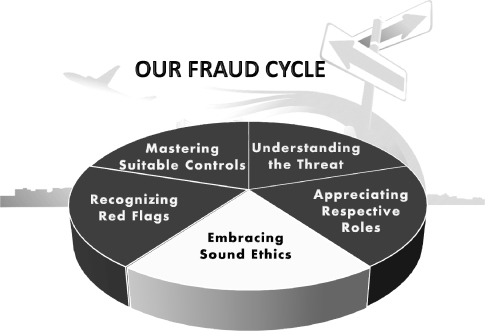10
Implementing Values
As we have already said, this book is based around the Fraud Smart cycle, which covers five key aspects of helping non-specialists get to grips with fraud at work. This is repeated in Figure 10.1.
Figure 10.1 The Fraud Smart cycle.

This chapter sits within the third part of the Fraud Smart cycle, Embracing Sound Ethics, and covers the process of implementing values to help promote an honest workforce.
WHAT CAN GO WRONG?
Fraud is the result of deceit, which is the result of dishonesty. If efforts are directed at trying to get employees to rally round the concept of honesty and business ethics, there is a much better chance of preventing fraud among the workforce. It is one thing to prepare a code of ethics and statements about behaving fairly at work, but it is necessary to go further and implement these values across the organization. If we fail to do this, much could go wrong.
We can consider how problems can arise by looking at three brief illustrative case studies taken from the UK and the USA. Our first relates to a particularly sad example of a House of Lords peer (a law maker) in the British government, who was found guilty of making false expenses claims:
CASE STUDY
He said that it was ‘common practice’ for peers to claim the maximum possible in tax-free expenses in lieu of salary.
This idea of ‘common practice’ was not accepted by the courts, but it ...

